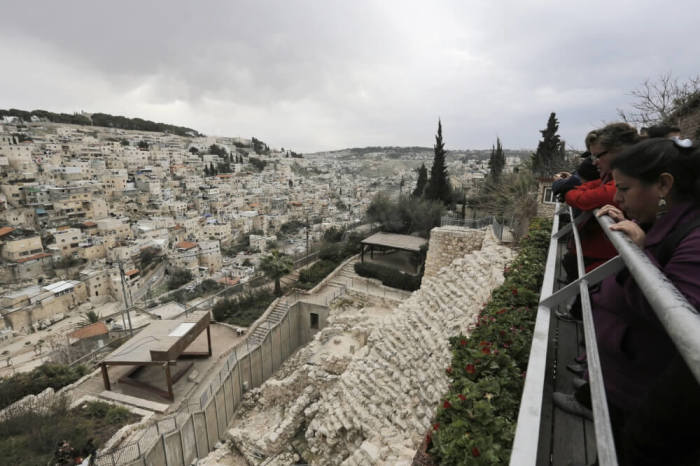Ancient seal stamp, bulla uncovered in City of David in Israel

An ancient seal stamp and bulla from the time of Nehemiah has been discovered in the City of David archaeological site just outside Old City Jerusalem in Israel.
According to Watch Jerusalem, the discovery of these items explain Jerusalem's standing and administration during the Persian period after the Babylonians destroyed the ancient city around 586 B.C. as told in the Old Testament books of Ezra and Nehemiah and also Haggai, Zechariah, and Malachi.
The seal stamp originally had a handle, is somewhat like modern large office stamps and was likely used to stamp jars or other large items. The face of the newly-discovered stamp is broken, but it has two images engraved on it which likely represents two characters in a pseudo-epigraphic style, images designed to look like letters.
Haggai 2:23 notes the use of such seals, also called signets, during this period in history. The verse reads: "'On that day,’ declares the Lord Almighty, ‘I will take you, my servant Zerubbabel son of Shealtiel,’ declares the Lord, ‘and I will make you like my signet ring, for I have chosen you,’ declares the Lord Almighty.”
Excavators working at the Givati Parking Lot, the largest active archaeological excavation in Jerusalem, made their discoveries known to the public last month.
The bulla, which is a clay seal impressed with an official seal stamp, "is more intricate and had been impressed twice by the same seal," Watch Jerusalem reported, and it "depicts a man seated on some kind of throne or administrative chair — perhaps a king or governor — together with pillars (perhaps the rod symbols of the Babylonian god Nabu or Marduk)."
The bulla is of a similar style from the same time period that have been unearthed in the City of David.
A large quantity of fish bones was discovered alongside the ancient artifacts. The fish bones reportedly indicate an emphasis in Nehemiah's day on the fish market, especially the condemnation of selling fish on the Sabbath as stated in Nehemiah 13:16. Nehemiah also mentions Jerusalem’s “fish gate.”
Relatively few artifacts from what is known as the Persian era have been found given the minor importance of the city in that time, except for 13 meters of a wall and tower that was a rebuilding effort of the original city of Jerusalem's fortification line.
Israeli archaeologist Eilat Mazar discovered this wall and tower in 2007 on the opposite side of the City of David. It was determined that based on the dating, location and the "hasty" style in which it was built, that the portion of the wall was the section spoken of in Nehemiah 3:16.
The archaeological site of the City of David is believed to constitute the original settlement core of Bronze and Iron Age Jerusalem and is presently organized as an Israeli national park. The site is located near Silwan, a Palestinian Arab village intertwined with an Israeli settlement that is situated south of the Old City of Jerusalem.





























